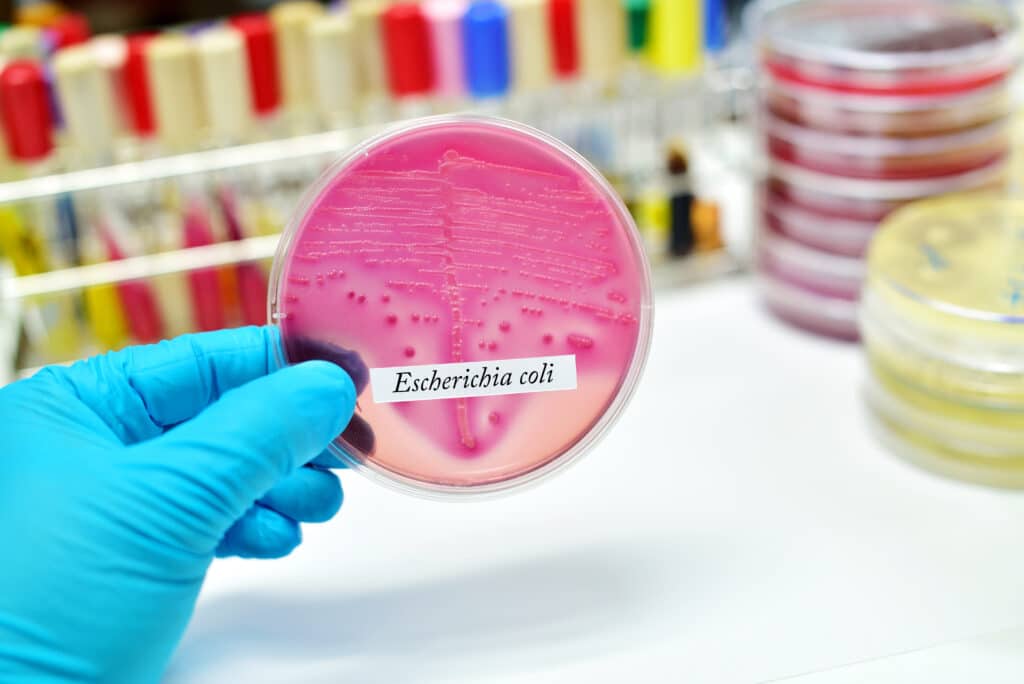- Many women experience Bacterial Vaginosis and Urinary Tract Infections at the same time which leads to difficulty in treating the symptoms.
- A study from Washington University has shown that the bacteria that is commonly found in BV patients can reactive dormant E. Coli from past infections.
- E. Coli is the leading cause of UTI inhealthy women, making up approximately 80% of all UTI cases.
- Asking your primary doctor or OBGYn to screen for G. Vaginalis and E. Coli is vital for getting the correct treatment.
- Both Vaginal Infections are common and easily treatable.
Have you ever found yourself searching through forums or websites because you weren’t sure if you had BV or UTI? You read through all the comments, experiences, and clinical studies trying to figure out exactly what you had. And as you’re analyzing the symptoms you’re experiencing, you come to the realization that you may not just have Bacterial Vaginosis or a UTI, but both at the same time.
A study done in 2017 by the Washington University School of Medicine study proved that it is very much possible for Bacterial Vaginosis to cause a Urinary Tract Infection.
Causes of Urinary Tract Infection
Urinary Tract Infections occur when bacteria that are commonly found in the small and large intestines make their way up the urinary tract system, which includes the bladder, kidney, ureter, and urethra. The infection appears when bacteria use their flagellum hook, an arm like a tool, to latch onto one of these organs and cause biofilm to build up. The most common of these bacteria is E. Coli which makes up approximately 80% of all UTI cases.
Urinary Tract Infections are normally treated with antibiotics, which can clear most cases. However, it is when the bacteria called Gardnerella Vaginalis (G. Vaginalis) is present that recurrent UTI along with BV can develop.
Common Symptoms of UTI include:
- A strong persistent urge to urinate
- A burning sensation when urinating
- Passing frequent small amounts of urine
- Cloudy urine
- Urine that appears red, bright pink, or cola-colored
- Upper back and side pain
- Fever, nausea, vomiting, and chills
- Pelvic pressure
How Does Bacterial Vaginosis (or BV) Happen?
Bacterial Vaginosis is defined as a type of vaginal infection that is caused by the imbalance of good lactobacillus probiotic and bad anaerobic pathogens. And when this occurs, much more happens than just the pH balance shifting which is what we commonly read about on most blogs.
- When pH increases it forms an acidic to a more basic state, leading to a harsher environment where bad bacteria can thrive in.
- When bad bacteria thrive (or there’s an overgrowth of bad bacteria), they compete more for the precious glucose – sugars that can be found in the vaginal mucosa, leading to the creation of toxins while reducing the efficacy of beneficial lactobacillus.
- With the bad bacteria creating a less favorable pH and good bacteria unable to compete for the nutrients they need in order to survive, the symptoms of BV present itself.
Symptoms of BV include:
- Thing, gray, white, or green discharge
- Foul-smelling “fishy” vaginal discharge
- Vaginal itching
- Burning during urination
How Can You Have BV and a UTI at the Same Time?
New studies suggest that when G. Vaginalis is present and residual E. Coli is dormant from a prior infection, the Gardnerella reactivates and increases the growth of dormant E. Coli, leading to a recurring Urinary Tract Infections. This is because the G. Vaginalis causes damage to the cells on the surface of organs and makes the E. Coli bacteria multiply.
There have been studies in the past that E. Coli can remain dormant after infection, however, this is the first study to show what the trigger may be.
The studies protocol included infecting the bladder of female mice with E. Coli in order to initiate a Urinary Tract Infection and then allowing them to recover. After one month and no detection of E. Coli in the bladder, researched introduced either Lactobacillus crispatus, G. Vaginalis or Sterile Saltwater as a control. Within 12 hours, both of the vaginal bacterias were eliminated from the bladder, but those that were exposed to G. Vaginalis found E. Coli reappeared in the urine and experienced recurrent UTI.
The study also found that when E. Coli traveled from the bladder to the Kidneys, severe kidney damage occurred. They also found that mice who were treated with the lactobacillus or sterile saltwater were 5x less likely to experience recurrent BV.
What does this mean for your vaginal wellness?
Having BV and a UTI at the same time presents a challenge. It can be treated with antibiotics, however, due to the nonspecific nature of antibiotics, the good bacteria and vaginal flora are put at risk, leading to greater opportunities for a Yeast Infection to happen and an overgrowth of bad bacteria.
And as we just learned, this can lead to recurrent UTIs if G. Vaginalis is present.
How can you treat and prevent BV and UTI’s?
- Take a probiotic supplement: First off, we always recommend taking a great probiotic supplement in order to increase the number of good bacteria in the vaginal flora. When you take a probiotic it creates more lactic acid in the vagina which can lead to a more acidic environment and inhibit the growth of bad bacteria.
- Take a cranberry supplement: Cranberry supplements can benefit from bacterial adhesion due to their antioxidant properties. Studies have shown that taking over the counter cranberry pills for vaginal health can reduce the recurrence of UTIs by up to 52%.
- Go to the doctor (or gynecologist) for testing: The most important thing you can possibly do is visit your primary physician, or OB/GYN, and ask to be screened for both E. Coli and G. Vaginalis. The reality is that you will only find what you test for, the doctor must perform a direct smear like a gram stain to test for G. Vaginalis, so if you believe you might have it, ask your doctor to check for it.
- Avoid using perfumed or chemical products: it is recommended that you use products without fragrances or chemicals in or around your vagina
- Avoid overwashing: read more about how to properly care for your vagina in our vulvar care post
- Change tampons or pads frequently: to prevent a build-up of bacteria
- Wipe properly: wipe from front to back when using the toilet
- Change underwear after swimming or exercise
- Drink plenty of water: drinking water helps flush out bad bacteria out of the urethra and helps prevent infection
- Wear cotton underwear
- Pee after any sexual activity: urinating after sex helps cleanse the urethra of harmful bacteria and reduce vaginal infections
- A-
- A+






